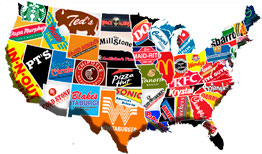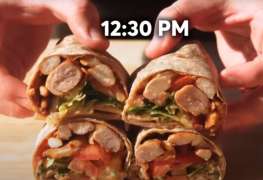 The pricing of food options may be exacerbating the childhood obesity epidemic in the U.S., according to new research.
The pricing of food options may be exacerbating the childhood obesity epidemic in the U.S., according to new research.
In a working paper published by the National Bureau of Economic Research, economists Michael Grossman, Erdal Tekin and Roy Wada examined the connection between the body fat compositions of youth across U.S. counties from 1999 to 2004 and the corresponding prices of foods. They found that bigger price tags on fruits and vegetables were associated with greater levels of youth obesity, while lower prices of fast-food options were correlated with higher youth obesity levels.
They obtained body fat measures from the National Health and Nutrition Examination Survey. For the price measure, the economists used three fast-food items — a McDonald’s Quarter-Pounder with cheese, a thin-crusted cheese pizza at Pizza Hut or Pizza Inn and fried chicken at Kentucky Fried Chicken or Church’s — and 21 grocery items, such as a pound of whole chicken, a loaf of white bread and a pound of bananas.
The economists also studied the way different groups react to fluctuations in the prices of foods. Boys tended to lose more weight than females when the prices of fast-food options went up, whereas girls were more sensitive to fluctuations in the prices of fruits and vegetables. Nonwhites responded more to changes in the prices of fast-food items and less to the cost of fruits and vegetables than whites.
The evidence seems to suggest that taxing unhealthy foods or subsidizing healthy alternatives might be a good way to fight the growing youth obesity epidemic. But the economists warn against price regulation. “Taxes are blunt instruments that impose significant welfare costs on individuals who consume food in moderation,” Messrs. Grossman, Tekin and Wada write. “Moreover, in the case of adolescents, an additional issue is that parents may more easily and immediately affect the choices made by their children than the government.”
Individuals who consider the health cost of a food item alongside the financial cost aren’t as reactive to fluctuations in the price of fast food, according to Mr. Grossman, one of the paper’s authors. He suggested early intervention programs as a more effective way to combat youth obesity than price regulations, citing that youths need the cognitive skills required to consider the long-term consequences of decisions. “A policy to make kids more future-oriented — I would ask policymakers to think more about this option,” he said. “It would spill over to other future outcomes as well, not just childhood obesity.”













Leave a comment